
The Winter Palace of Peter the Great and the Hermitage Theater is a historical and architectural monument located in the central part of St. Petersburg and included in the museum complex of the State Hermitage Museum.
The Winter Palace of Peter the Great was built in 1712 on the Neva embankment as the personal residence of Emperor Peter the Great.
After the death of the tsar and later his wife, Catherine I, the Winter Palace of Peter I was used for various needs of the imperial court, and under Elizabeth Petrovna, the life-Campan company was placed within its walls, with the help of which the daughter of Peter I took the royal throne.
At the end of the 18th century, the Hermitage Theater was built on the site of the palace, and only a small part (rooms) have survived from the former palace, which are now included in the Hermitage Theater.
The Hermitage Theater is one of the oldest in St. Petersburg and in Russia.
Since the 18th century, theatrical performances at the royal court have become traditional and accompanied many festivals. For this reason, in 1783-1789, the architect Giacomo Quarenghi commissioned Catherine II to build a separate theater building.
The first season at the Hermitage Theater opened before all the finishing work was completed - on November 16, 1785, with the performance of the opera "The Miller, the Sorcerer, the Deceiver and the Matchmaker".
In 1894, the theater was restored. In 1902, the architect L. N. Benoit designed the theater foyer in the Rococo style.
After the events of 1917, the theater housed the Lunacharsky Workers ' University, and various concerts were held in the 30s. In 1935, the theater ceased its activities. For many years, the room was used as a Lecture Hall of the State Hermitage Museum.
In the early 1980s, it was decided to carry out a complete overhaul and restoration of the theater building. In January 1991, the Hermitage Theater reopened its doors.
Today it is one of the most popular stage venues in St. Petersburg.
The building of the Hermitage Theater (the Winter Palace of Peter I) is a monument of Russian classicism architecture of the late 18th century. Its main facade faces the Palace Embankment of the Neva River. The side facade faces the embankment of the Winter Canal and is adjacent to the main palace complex (the State Hermitage Museum) by an arch-passage across the canal. The arch-crossing runs over the Hermitage Bridge.

In the photo: the arch-passage, the embankments of the Winter Canal, the Hermitage Bridge and the side facade of the Hermitage Theater (right)
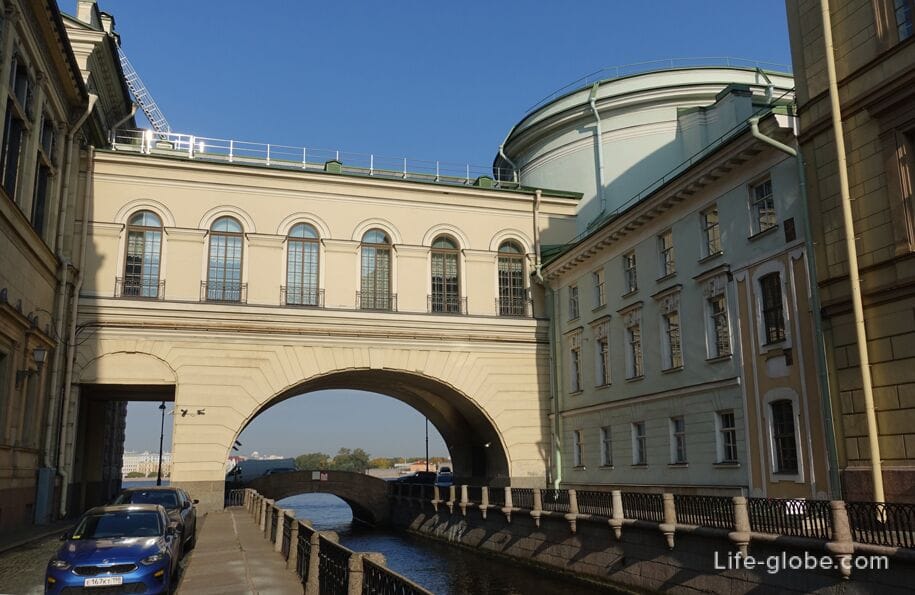
The building of the theater is characterized by harmony and balance of architectural forms. It is distinguished by a two-story rusticated part and a shallow loggia between the side risalites.
In the niches of the facade there are sculptures and busts of ancient Greek playwrights and poets.
The central part of the facade is decorated with slender bas-relief columns with capitals supporting the cornice of the building.
The rusticated windows of the first floor are decorated with keystones with lion "masks".
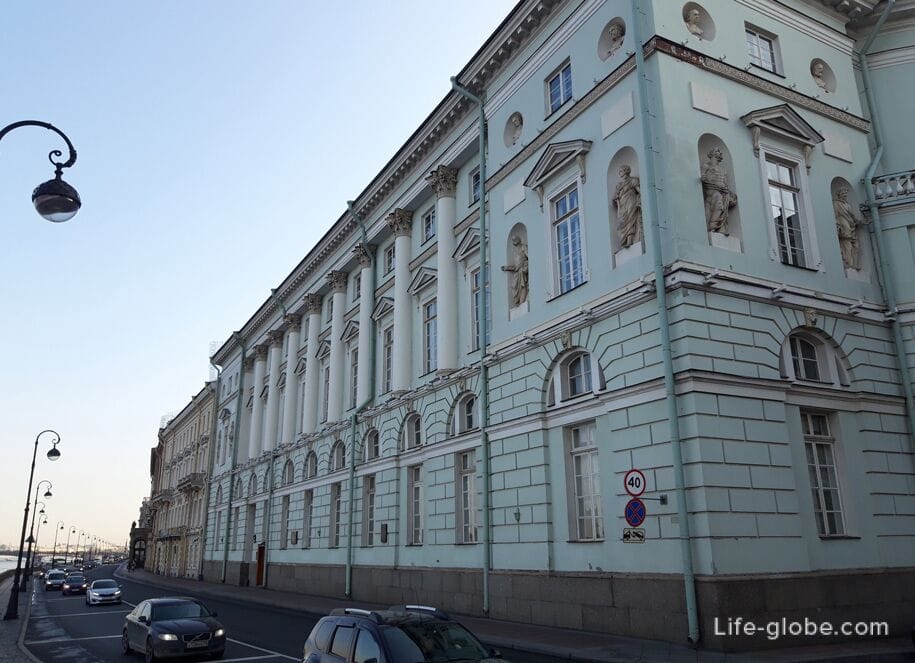
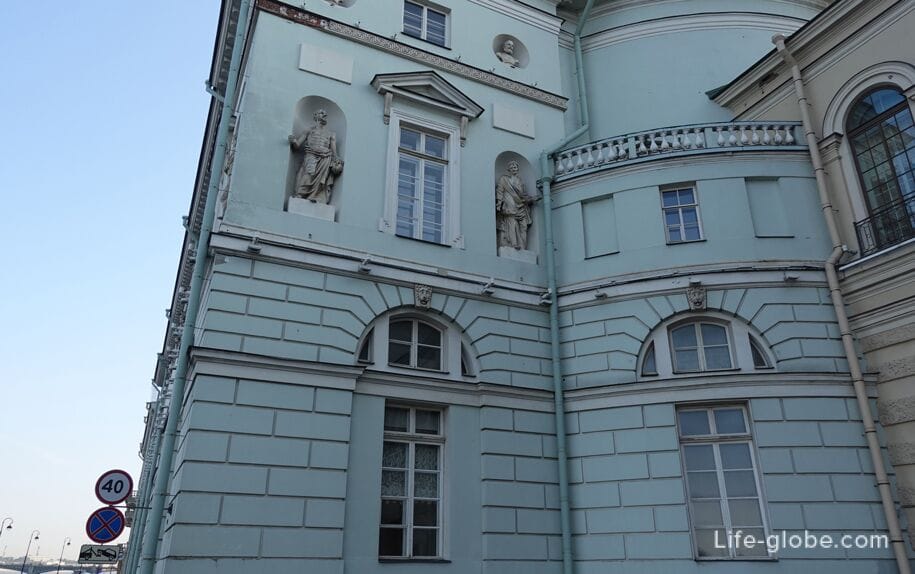
The theater gives performances and concerts, and exhibitions are held in its lobby. The Hermitage Theater also hosts scientific conferences, seminars, and symposiums.
In the preserved part of the Winter Palace of Peter the Great there is a memorial exhibition dedicated to Peter the Great and his era.
The auditorium of the theater is arranged like an ancient amphitheater. The walls and columns are decorated with colored artificial marble. In the niches are sculptures of Apollo and the nine Muses, and above them are bas-reliefs with portraits of famous musicians and poets.
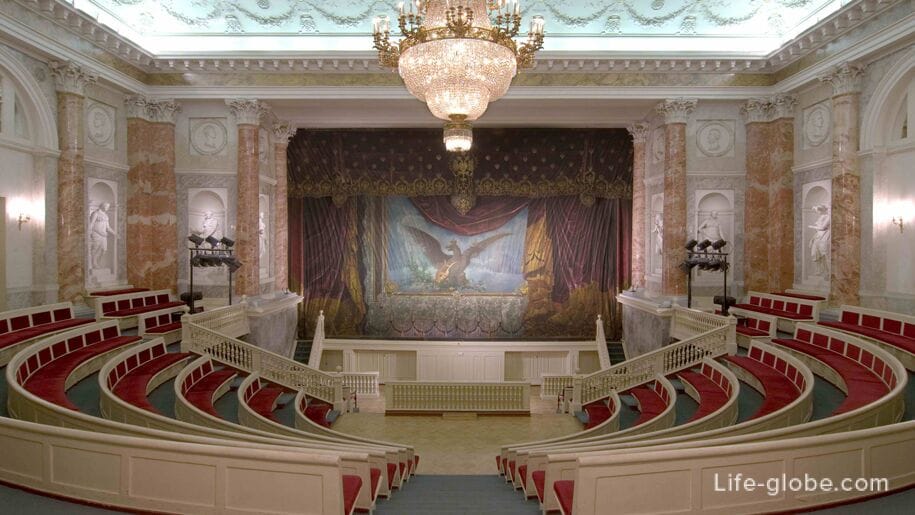
In the exposition part of the Hermitage Theater - the former Winter Palace of Peter the Great, some rooms of the emperor are preserved and recreated - the study, dining room and lathe, the main exhibit of which is the lathe and copying machine of the English master George Zanepens.
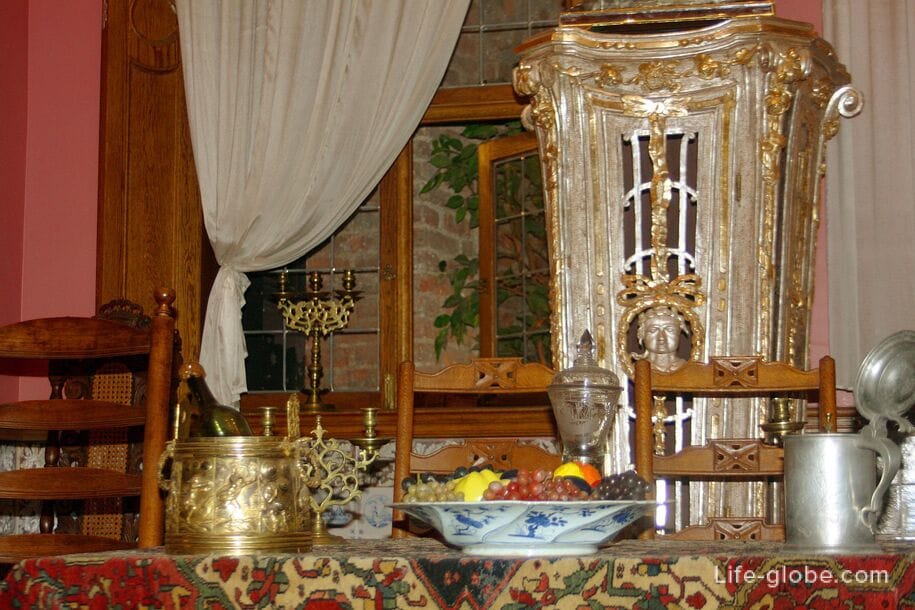

The museum exhibits the so-called "Wax Person" - a posthumous sculptural portrait of Peter the Great.
Peter I died on January 28, 1725 in the "Office" - a study located in the western part of the palace. Immediately after the death of the emperor, C. B. Rastrelli removed the plaster mask from his face and made casts of his hands and feet. Based on these casts and the mask, he created a "persona"in 1725.
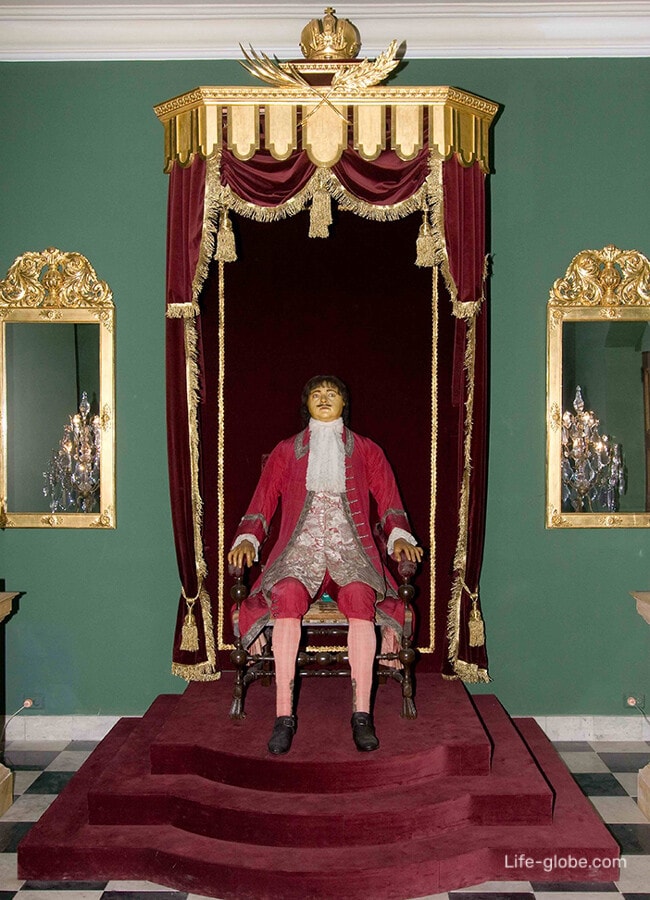
In the former Main Courtyard of the palace, the carnival sleigh and the garden carriage of Peter the Great - a rare example of a walking carriage of the early 18th century-are on display.
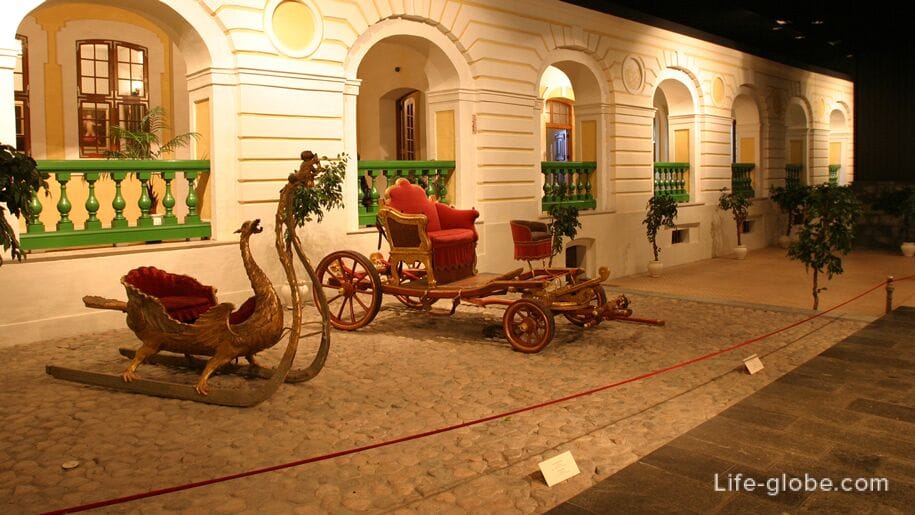
The Hermitage Theater (the Winter Palace of Peter the Great) is part of the State Hermitage Museum and is part of the main museum complex.
Address: Dvortsovaya embankment, 32-34.
Website: hermitagemuseum.
Entrance to the theater from the Palace embankment 34 (Small entrance), a door with a visor.
The nearest metrostations are : "Admiralteiskaya" (800 meters), "Nevsky Prospekt" (1 kilometer), "Gostiny Dvor" (1.3 km).
Ground stop: "Palace Square" (300 meters). Buses: 7, 10, 24, 191, trolleybuses: 1, 7, 10, 11.
The State Hermitage Museum has an official 5-star hotel with an exquisite interior of the luxury of Tsarist Russia, which is located in a quiet part of the historical center of St. Petersburg in a building built in the mid-19th century.
At the hotel: boutique restaurant, restaurant, lobby bar, fitness center, spa and wellness center and free Wi-Fi.
The rooms and suites are decorated with elegant furniture designed by Florentine woodworkers. Each room here will provide you with a flat-screen TV, a minibar and a private bathroom with Italian and Greek marble. Bathrobes are also provided.
Breakfast can be included in the room rate. Link to the hotel
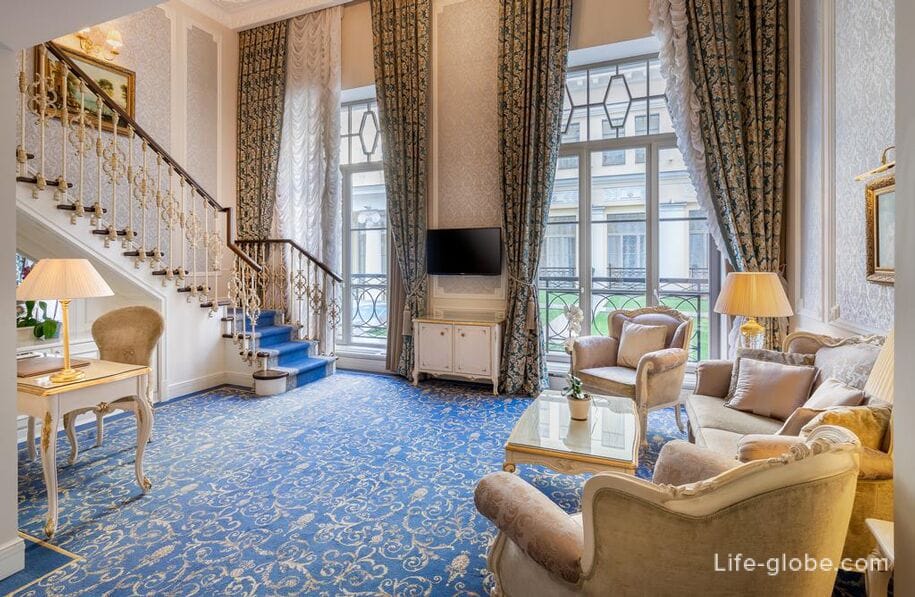
All accommodation facilities in St. Petersburg, including in the city center and more remote from it, can be viewed and booked here